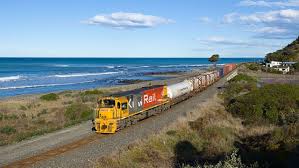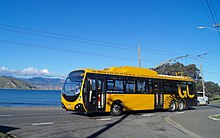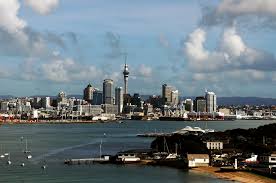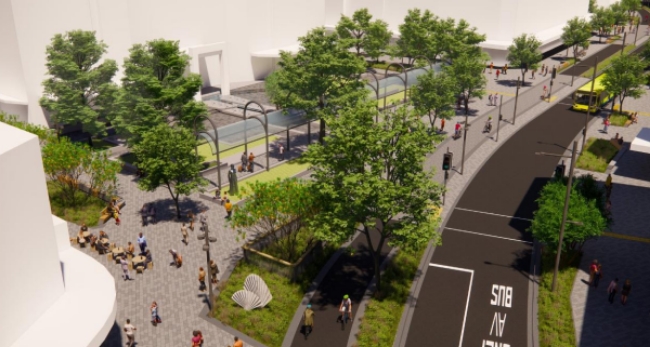Richard Peat, the founder of Aotearoa Rural Rail / Rerewhenua ā-rohe o Aotearoa, discusses why Aotearoa New Zealand’s railway network has not enjoyed a favourable economic or political environment.
Since the mid 20th century central government has dictated rail investment policy and the management thereof, demanding that its servants - past and present - stop losing money on all rail activities.
That is an executive policy which is akin to shaking a baby to make it stop crying. It is a futile act of desperation by a central body that truly does not understand what's really happening in their railway world, and critically, how to stop the rot and build a sustainable expanded rail network across both islands fit for the future.
For one moment reflect on this: Aotearoa New Zealand’s roads and domestic flights are not within themselves independently profitable. To exist and function effectively they receive huge state financial and other support tools. So why should a commercial profit burden be placed exclusively on a “steel road” for trains when deciding upon individual line closures, reopening of mothballed lines, upgrading track or actual network expansion.
Without 60+ years of continued central and regional government interventions, funding and subsidies for state-of-the-art air traffic control infrastructure and airports, Air NZ domestic flights could not possibly return a real profit year-on-year. Its so called “profit” statements have only been achieved via slick accountancy practices and euphemisms that enable the annual accounts to return favourable figures. And lets not forget that domestic Air NZ still enjoys aviation fuel supplies tax free. That favourable tax exemption is not given to the diesel train operator. NZ the land of equality or an even playing field - clearly not.
The same generic “life-support” applies to road users both private and commercial for their cars, trucks and buses. All have similarly taken for granted millions if not billions of NZ$’s leveraging road repairs and upgrades, new roads, tunnels, bridges, traffic management systems, road lighting and signage for thousands of business and private motorists to be able to rely upon that tarmac infrastructure.
Domestic commercial passenger transportation fails to make a real profit if all of the costs attributable to their existence are calculated. One only hears air and road lobbyists cry loudly that rail has had more dollars of assistance since the end of WW2 however under a forensic examination that’s fiscally simply not true.
Why then is rail made out to be a special case of having to prove its ability to be profitable and unaided when air and road apparently do not have to.
Questions therefore may be reasonably asked:
Are private cars "profitable" when they carry an average of 1.2 passengers per trip and spend on a daily average around 20 hours of each 24 hour cycle sitting idle in a garage, at a retailer’s premise or a workplace parking space or would commercial vehicle operations today generate a true profit if all of their highway costs were attributed to their daily commercial movements?
Should not an airline be placed into liquidation or major restructuring because it has shown a negative aggregate profit, or, have their route network relegated to history as have absolutely 98% of all inter-regional rural passenger rail services outside of metropolitan AT and MetroLink regions.
Globally airlines and roads have been, and continue to be, the beneficiaries of probably the largest taxpayer subsidy programmes in history. Passenger railways are always last to the begging bowl and generally that bowl is empty or only contains the scraps to barely keep passenger rail on life support. The latest example of this is President Biden’s stimulus package where again road transportation infrastructure repair and expansion, plus US airline emergency loans are a plenty, with little left in the pot for Amtrak.
Within Aotearoa New Zealand passenger rail without doubt could be the most accessible, affordable and environmentally least damaging form of inter-regional and nationwide public transport.
No rational politician would legislate a public or privateer to operate a passenger rail service along an early 20th century steel pathway using passenger rail technology of that age whilst demanding they pay their employees 21st century wages and produce a profit.
So why do NZ politicians et alia expect rural passenger rail to earn a profit carrying passengers according to those rules. It cannot be done.
Passenger trains, like cars, buses and planes cannot perform effectively and efficiently on an obsolete infrastructure with yesteryear’s diesel motive power hauling heavy weight passenger rolling stock to stations across the nation that are in the main unfit for purpose.
Airlines demand modern consumer friendly safe and comfortable terminals. Rail passengers deserve the same respect.
Is Hamilton’s railway station genuinely the most welcoming departure / arrival advertisement for the city. May be it was in the 1960’s but to be a successful marketing tool today it needs to reflect the expectations of the 21st century traveller - domestic or foreign.
The Te Huia and the Capital Connection are old-tech solutions. Highly polluting diesel motive power locos hauling passengers sitting inside expensively modified heavy weight (i.e. inefficient fuel depleting) ex British Rail carriages of a foregone era. Rolling stock that accelerates wear and tear of the steel highway rather than safeguarding the rails. At best it is window dressing; a short term quick fix that’s a waste of the railway’s investment budget.
Would the Beehive authorize the use of 60 or 70 ton trucks on state highways? Of course not, so why were these “modus operandi” rail investment follies permitted.
They are not decarbonising the rail industry to promote a cleaner and quieter rail passenger experience. They are not the zero carbon motive power or light weight fuel efficient rolling stock of the future that the NZ public and the environment deserve.
Passenger trains have every right to require from central government investment in continuous welded track, passenger rolling stock, zero emission motive power, and a modern station real estate. Not just in the metropolitan rail regions.
By the same token, the flying public expect modern airport terminals, safely controlled flight paths and airports that serve more than one airline. Is it not reasonable for rural communities to be equally served by inter-regional rural passenger trains supervised by command & control safety systems and convenient comfortable weatherproof stations.
To summarise; the present state of the inter-regional rural rail network cannot be described as fit for purpose or a consumer friendly competitive playing field.
Until New Zealand Government supports a modern purposeful and relevant steel highway of inter-regional rural train tracks there can be no valid comparison between the efficiency or profitability of passengers trains vis-a-vié cars, buses or planes.
To be competitive trains must first be provided with the infrastructure of competitive success, just as motor vehicles and airplanes enjoy.
Anti-rail lobbyists say government has no business promoting long distance train travel, or, should not invest in returning passenger trains to the smaller rural town communities.
The challenge to that is: Why Not.
Which guru, politician or layman advocates that long distance train travel across Aotearoa New Zealand is only for leisure travel and in that, primarily for foreign tourists by pricing off the average Kiwi family from using the KiwiRail Grand Journey trains with ticket prices that they simply cannot afford. And is it not immoral that the tax payer finances the refurbishment of such overseas tourist focused trains.
Demographics and societal behaviours have dramatically changed. A start to recognise that has to be made somewhere, and that refocus is to reconnect to the majority of Aotearoa New Zealand’s population - the “Rail-Poor”- who despite there being a rail track on their door step have no passenger train service. There is empirical and statistical evidence that the “Rail Poor” will support new passenger train services in sustainable volumes and that also metropolitan Kiwi’s plus domestic and overseas visitors will do likewise.
Rail is attracting a rapidly increasing band of eco-travellers willing to dump the plane, hire car and camper van wherever practical. These are the expanding “No-Fly or Fly-Less” environmentally aware community, or, visitors to Aotearoa New Zealand who are used to travelling by train in their homelands but currently find Aotearoa New Zealand’s passenger train mobility options puzzling, restricted in scope and very inconvenient.
Government ministers cannot continue to support KiwiRail’s anarchic budgetary allocation of freight winners at the total expense of rural communities as losers. The consequence of more rural tracks being removed, decommissioned or mothballed by KiwiRail’s budget lottery games are yet more decades of rural depopulation, unemployment, social deprivation and poverty that leads inevitably to increased criminality.
Really ministers, members of parliament and anti-rail lobbyists - is there truly a veritable “bona fide” case for not equally funding a nationwide rail network, a “Steel Highway” for inter-regional rural passenger train services.
Or do you in this 21 century of prodigious rail technological progress, environmental concerns and social injustices still consider it honest to promote that “flight pathways” and “tarmac highways” are the only cogent candidates for reaching Aotearoa New Zealand’s plethora of rural communities?
An opinion by Richard Peat, the founder of Aotearoa Rural Rail / Rerewhenua ā-rohe o Aotearoa
For further reading concerning the points raised in this opinion -
- Time for a new regional passenger rail network
- Its time for a national public transport network
- Light Rail for Branch Lines
- Future of long distance passenger rail services in New Zealand
- Connecting Communities Initiative
It is time to reform rail in Aotearoa New Zealand now, so lets do it
If you support the government to reform and make the necessary investment to upgrade the national rail network into an 'open access', sustainable, environmentally friendly, strategic national 'steel' highway network, have your say or become proactive by getting involved in local better public transport campaign groups.



